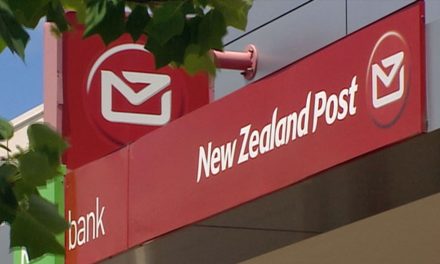
Learning from New Zealand Post
Paul Jackson, chairman, Triangle Management Services, provides an insight for Post&Parcel’s sister publication, Mail & Express Review.
This article represents Paul’s conclusions following a recent trip to New Zealand. He feels that there are many lessons to be learnt from that Post’s transformation. Whilst Mail & Express Review is grateful for input from New Zealand Post, particularly in clarifying financial and other data, the opinions and conclusions are the author’s own.
New Zealand Post in 1987 was one of the first national posts anywhere in the world to be corporatised. It ceased to be a government department, and, whilst remaining government owned, became a commercially driven business with its own board of directors and commercial balance sheet. The last year as a government department it lost NZ$37.9m. Ten years later it was winning awards and accolades from around the world and making profits before tax of up to NZ$118m with healthy dividends of up to NZ$24m.
Let me try to summarise that first decade following corporatisation. In the ten years mail volumes increased by 64%, real costs decreased by 34%, personnel expenses reduced from 73% of operating costs to 51% and productivity increased by 121%. Average return on investment (before tax) was a very high 35%. During the same period New Zealand Post also paid around NZ$380m in dividends and taxes AND reduced prices to major customers as well as reducing the standard letter price. In 1987 there were over 12,000 employees. Even after significant diversification activity the number today is only 11,000.
What follows is a selection of some of the ground breaking developments from that period: some genuinely world first, but not all of them successful.
Reshaping the post office network and setting up a bank
In 1987 New Zealand Post had 1,200 owned and agency retail offices. Within a year of becoming a state owned enterprise, and with the Government announcing that there were no longer to be any subsidies, 432 offices were closed overnight. With the corporate separation the post lost a significant proportion of its retail sales as the existing PostBank withdrew its over the counter transactions.
Subsequently, there was the development from scratch of a new bank, KiwiBank.
The setting up of KiwiBank was a very brave and dynamic thing to do. New Zealand Post identified a niche opportunity arising from growing consumer dissatisfaction with the fee structures of traditional retail banks, and the contraction of branches. The main banks were also mostly overseas owned.
KiwiBank has grown to become an influential force on the New Zealand banking scene, with over 700,000 customers and 8% of the retail market. In the 2010 financial year the banking business represented around 44% of the New Zealand Post Group’s normalised earnings compared with 20% contribution from the combined postal and retail services.
(It should be noted, however, that these relative values reflect not just KiwiBank’s growth but also the decline in traditional letter volumes from over one billion to around 840m, and still declining at 4-5% per year. At the same time the essentially fixed cost delivery network has expanded from 1.6m to 1.9m addresses.)
The issue for KiwiBank now is that, as more transactions move online, this is reducing the visit frequency and the shop network is constantly being reviewed. This comprises full service PostShop Kiwibank stores and postal services only PostCentres. Numbers peaked at 1,012 outlets in 2004: this had reduced to 933 outlets in the 2010 financial year, of which 307 were full service shops.
Improving quality and efficiency
New Zealand was one of the first posts in the world to introduce pricing by size in an effort to reflect better the real cost of mail handling, which is more driven by shape than weight.
A “clear each day” mail sortation policy was also introduced. This became an excellent motivator and encouraged a whole new pride in the job, contributing to improved job satisfaction throughout the organisation. Not only was this sound management but it also cut masses of overtime as deferred sorting somehow always built up into regular overtime!
Another simple but very efficient innovation was to move from bags to the use of trays. Whilst this increased volume and hence linehaul transport costs, trays saved duplication of sorting and the mail was subject to virtually no damage. Yet many posts unaccountably continue to use mail bags for distribution.
Setting up a postal airline and allying with the integrators
Once you have made the decision to set 96.5% targets for all letter services, in a country the size of Great Britain but without the same sort of road and rail infrastructure, you inevitably need to place greater reliance on air transport to achieve next day service standard in particular. Since New Zealand Post’s needs could not be met by existing air services, it created its own airline. I guess this was a bit of a shock for the Government as shareholder but it was all eventually approved and a seven aircraft fleet continues to run five nights a week like clockwork.
It also supports the service standards for the successful 50:50 joint venture courier business with DHL, itself pretty ground breaking in its approach.
Moving into management consultancy
Riding on the success of its own transformation, the post set up a new company, ultimately marketed as Transend, to act as a consultancy for postal change worldwide. Interestingly, it was not a joint venture with an established consultancy. It advised and even at one time invested in some overseas posts such that at its peak Transend was directly or indirectly operating six national postal companies. That said, from the outside it looked to have become over ambitious and with a culture that upset some of its clients. It still exists, but in a less high profile form.
Changing rural delivery arrangements
Since the 1920s there had been a rural mail delivery fee of NZ$40 levied on 120,000 farmers and other country dwellers. When New Zealand Post doubled the charge to NZ$80 in 1992, this turned into a public relations disaster. In a complete reversal, the post saw the error of its ways and the charge was dropped completely in 1995. There are lessons for everyone here!
New Zealand Post has also introduced contractors on its rural delivery rounds, including some of the smaller towns, to help reduce its fixed costs. This has worked well with 540 delivery rounds contracted out to local distributors who also deliver other household items such as bread and newspapers. As independent business people, the contractors are integral members of the rural communities they serve, and develop strong relationships with their customers. At the same time they are valuable agents for New Zealand Post’s products and services.
How the competition views New Zealand Post
Group Managing Director Brem Ellingham, of competitor Fastway Post, which was one of the first companies to take advantage of postal deregulation, believes that New Zealand Post has been reluctant to accept competition which was forced upon them when the postal market was deregulated in 1998. “For too long New Zealand Post has failed to see the opportunities that effective competition brought to the postal market,” Ellingham argues. He hopes that, with new senior management and the post’s agreement to set up an independent committee to control access to the postal network by independent operators “meaningful competition will soon be possible”.
The perspective of a former CEO
The last words should go to Elmar Toime who was heralded for what he did in New Zealand in that halcyon period after commercial freedom became a reality. Elmar is still very active in the postal industry, as a consultant and including being on the supervisory board of Deutsche Post DHL.
Elmar feels that there are many lessons coming out of the New Zealand Post transformation. Principal among them is the clarity of the role of government as both shareholder and with responsibility for postal policy. “So when complete liberalisation of the letters market was being debated, the argument was about the post’s needs as against the value of a competitive market. Competition rightly prevailed. Once you have these matters explicitly put in place, it opens the environment for innovation.”
Another key issue for Elmar is access to capital. “It is apparent that those posts that have moved on past what was once called transformation are now facing the need to diversify. That requires new capital and shareholder confidence in management capability.”
Elmar adds that another key learning point is that “the postal heritage is logistics. Whilst there might be partial privatisation through the spinning off of successful postal offshoots, at the same time the post must not lose control of opportunities in logistics.”
For Elmar, the biggest diversification question today is what to do in digital mail. “Hybrid mail markets are well understood and now under the control of all the transformed posts. But can money be made in digital services?” The case is unproven but “you cannot afford not to be in the game…the postal industry is always fascinating in its strategic options!”
This article was published in the June issue of Mail & Express Review. To subscribe to the magazine, click here.











